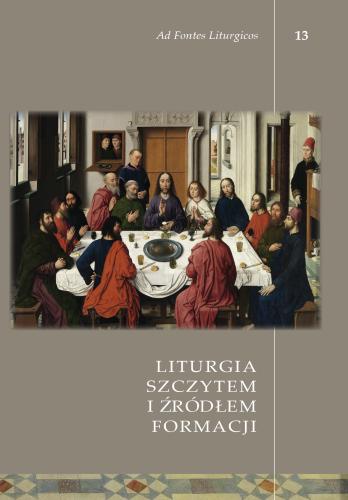Formacja liturgiczna alumnów po Soborze Watykańskim II
Streszczenie
Celem formacji liturgicznej jest zrozumienie, w jaki sposób celebruje się i wyraża misterium zbawienia. Fundamentem formacji liturgicznej jest zbawcze dzieło Jezusa oraz udział człowieka w jest misterium paschalnym Chrystusa poprzez wiarę i sakramenty. Formacja ta ma być mistagogiczną, więc ma obejmować przede wszystkim uczestnictwo w liturgii, która sama ma moc oddziaływania na jej uczestników. Dlatego na pierwszym miejscu dokumenty zawsze stawiają uczestnictwo w liturgii, a dopiero potem naukę i praktyczne wtajemniczenie w obrzędy. Jeśli chodzi o życie liturgiczne w seminarium ma ono koncentrować się na codziennym uczestnictwie w Eucharystii. Obok niej pojawia się także troska o częste sprawowanie Liturgii godzin, sakrament pokuty i pojednania i właściwe przeżywanie roku liturgicznego. Ważne są także przyjmowane w odpowiednim czasie posługi lektora i akolity. W Nowym Ratio studiorum dla Polski nauka liturgii wpisana została w nowy podział całej formacji seminaryjnej, czyli „etap propedeutyczny”, „etap stawania się uczniem Jezusa”, „etap upodabniania się do Chrystusa” oraz etap pastoralny. Ratio studiorum dla Polski przewiduje w czasie studiów tylko 120 godzin zajęć liturgicznych (85 godzin wykładów i 35 godzin ćwiczeń), do których dochodzi jeszcze przedmiot „Liturgiczna posługa prezbitera” na etapie pastoralnym.



